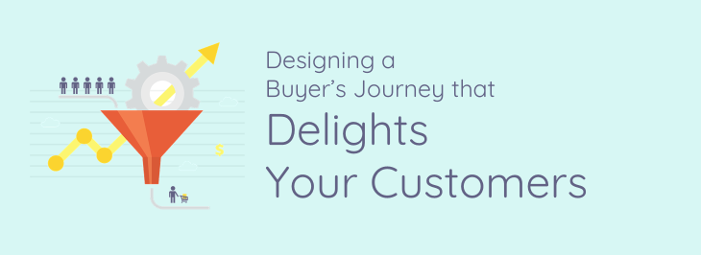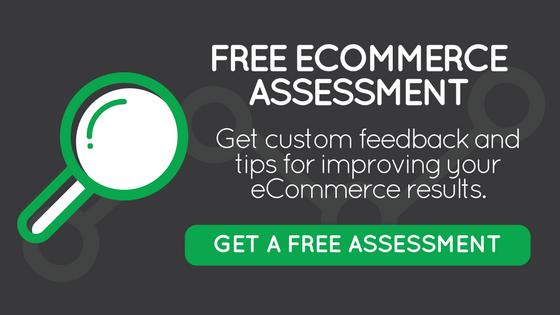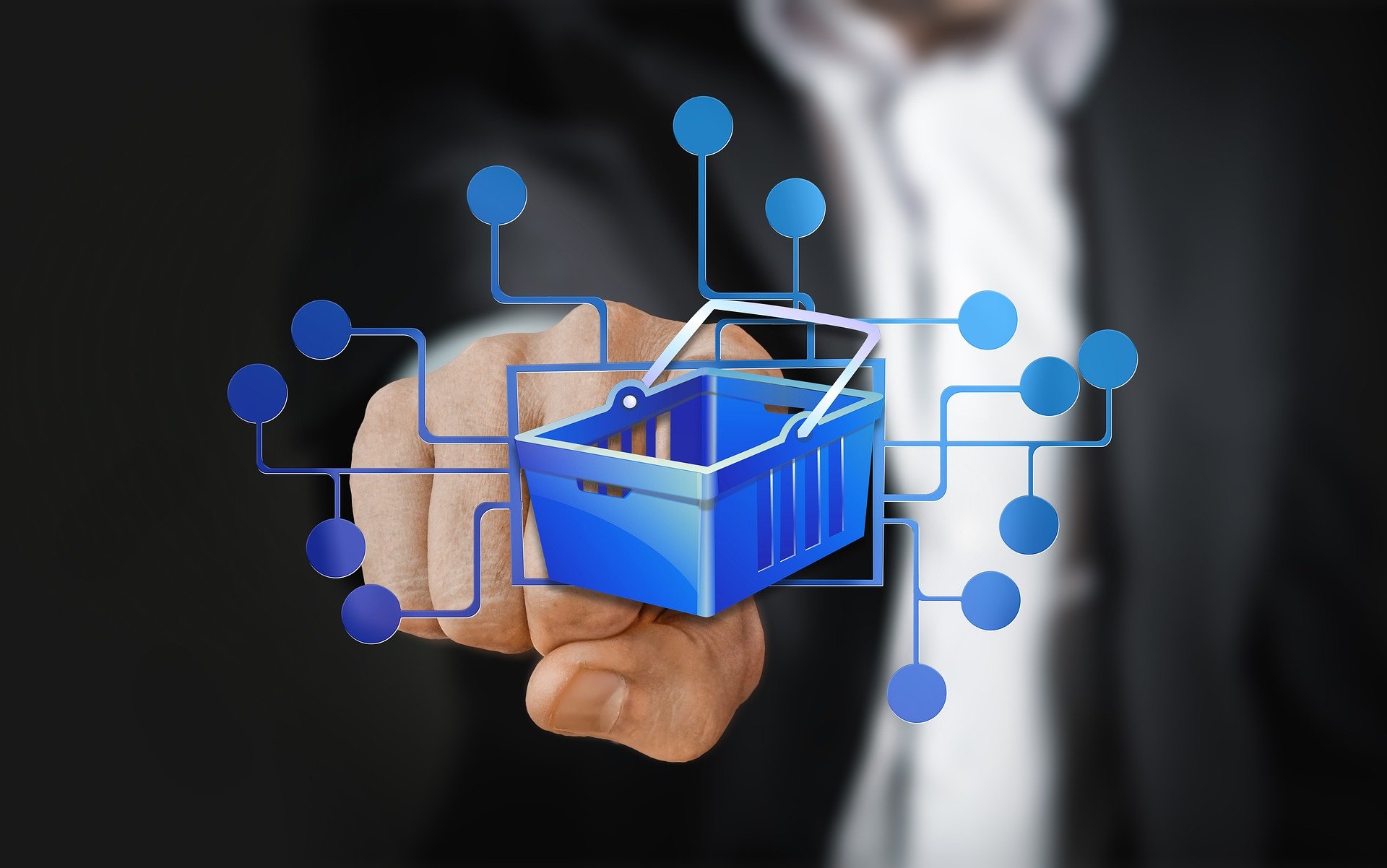
A lot has changed since the inception of the Internet. In the pre-Internet world, information about products and services was not readily available and buyers relied heavily on salespeople to make an informed buying decision. In today’s Internet world, information is readily available for buyers to conduct research prior to making a buying decision.
eCommerce Inbound Marketing Methodology
The eCommerce Inbound Methodology provides a simple buyer’s journey framework on how to attract, convert, close, and delight your ideal customers on digital platforms. Today’s consumers don’t want to be sold, they want to be helped and advised on how to make good buying decision. The intent of the eCommerce Inbound Methodology is to provide the right customer the right content and offer at the time so they are able to make informed buying decisions.

eCommerce Inbound is about knowing your customers (i.e., customer personas) and providing them the right content and offers, at the right time. It’s also about nurturing them through a buyer’s journey that helps them every step of their buyer’s journey. When designed well, the buyer’s journey is focused on helping your customers and providing them with value. With your customer personas in mind, retailers can design a buyer experience that effectively nurtures visitors in each stage of the buyer’s journey – attract, convert, close, and delight. And, while most businesses stop end their major strategies at the delight stage, your ultimate goal should be to create repeat customers by continuing to cultivate a relationship. The buyer’s journey is the process buyers go through to become aware of, evaluate, and purchase a new product or service. The journey is a four step process:
- Attract Stage: The buyer recognizes a problem or desire and begins researching to define it.
- Convert Stage: The buyer defines their problem and looks for potential solutions.
- Close Stage: The buyer weighs options available and makes an informed purchase.
- Delight Stage: The buyer takes the first several weeks or months to recognize their feelings about the product, brand, and solution they have chosen. Delighting the customer is the goal of every business and increases the chance that the customer will make a repeat purchase.
Attract
At the start of the buyer’s journey, buyers are likely to be unaware of your brand or that they even have a need. At this stage, they are doing research on something they’ve noticed is a pain in their life. In a majority of cases that research is being done on Google.

As a marketer, your job at this attract stage is to know your buyer (i.e. persona), anticipate the types of problems they will be doing research for, and create the content that help your buyer address the problem. The content you create should be focused on your buyer’s problem and pain points — not your product, service, or brand. Content and advertising aimed at reaching this level will simply help the lead identify their pain and further define the root cause.

To connect with buyers at this stage, the following inbound tactics are applied:
- Generate Content specifically for the Attract stage: Providing helpful educational content like blog posts, eBooks, infographics, videos, and reports that help search engine users address their problem.
- Optimize this content so it is easily found on Google: Avoid a sales pitch at this stage in the buyer’s journey, since you are building trust with a customer-centric approach and establishing your brand as a trustworthy source of helpful information.
- Social Publishing: Engage with buyers on the social media channel they are using and repurpose your content for this stage to help buyers with their problems.
- Paid Search: Expand the reach of your content by placing ads targeting your ideal buyer centered on this problem domain.
- Activate Marketing Automation: In exchange for this type of valuable content for your buyers at this stage, you can begin developing a few simple lead nurturing campaigns.
Convert
Once buyers have narrowed down their options, they typically return to the research stage again to seek out potential solutions.

At some point in their research, buyers will begin doing comparisons of each product or service they are considering. This is the stage where they can really drill down into the features that matter to them.
- Generate Content specifically for the Convert Stage: Again, provide helpful educational content to help the buyer evaluate their options to help them make an informed buying decision. For example, you could consider creating a comparison guide that includes competitive offerings to help your buyer through this part of their research.
- Comparison Features: Provide your buyers the ability to easily compare your product/service offering features and benefits.
- Free Trials: Offer free trials of your products or services to ensure product and service fit.
- Leverage Marketing Automation: Marketing automation tools will enable you to track of the activities (i.g., downloads, page visited and time spent on those pages) of you buyers as they progress through their journey and progressively scoring their buyers intent.
Close
At this stage, your buyer is prepared to make a buying decision. They have concluded their research and are now prepared to make a purchase.

- Mobile Friendly: As more and more people are making online purchases using their mobile devices, having a mobile-friendly store and easy checkout process is vital. In fact, in 2017 60% of visits to eCommerce sites will come from smartphones.
- Videos: Include video on your product and service pages. StacksAndStacks reported that visitors were 144% more likely to make a purchase after seeing a product video than those who did not.
- Online Reviews: Reviews are highly effective when it comes to nudging your potential customers to make a purchase. In fact, 55% of shoppers find reviews important for making purchase decisions, and 69% of online shoppers want more reviews from eCommerce sites.
- Online Chat: Depending on what type of product you sell, online chat can provide customers immediate questions to questions they have prior to making a purchase.
Coupons and Incentive Offer: Discounts and incentive offer like free shipping influential in purchase decisions. - Risk-Free Return Policy: Depending on your business, a risk-free return policy not only improves conversion rates and also help strengthen brand loyalty.
- Site Speed: Slow site speed is like waiting in a long line at checkout. Customers are busy and don’t like to wait for your store to respond to their request.
- Abandon Carts: Abandon carts happen for a variety of reasons. However, in many cases, customers welcome being reminded of purchases they were in the process of making.
- Easy Checkout Process: To minimize abandon carts, streamline your checkout process.
Delight
At this stage, if everything went well with their purchase, and your buyers are happy with where they’ve ended up at the end of their journey, they can become a valuable marketing resource. Customer evangelists, who can speak positively about your product and the experience they’ve had with your company, are a powerful resource — and one that companies should work hard to cultivate.
- Personalization: Your eCommerce platform is filled with rich customers data including purchases made, recency, frequency and total purchase value. All of this information can be leveraged to create personalized shopping experiences. In fact, 75% of consumers are more likely to buy from a retailer that recognizes them by name, recommends options based on past purchases, or knows their purchase history.
- Customer Service: It is inevitable that customers will encounter problems with their shopping experience with your store. Provided you are prepared to effectively engage in this experience will determine if you have lost a customer or are able to create a customer for life.
- Loyalty Program: Design and enroll your customers in a loyalty program. Loyalty programs can help influence: purchase frequency, referrals, online reviews and more.

Similar Posts:
- Creating Relationship Context with Buyer Personas
- A Definitive Guide to Digital Marketing for eCommerce to Increase Customer Lifetime Value






